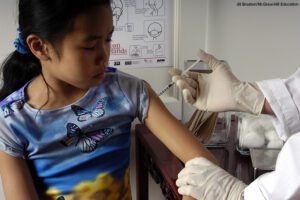Coronavirus Vaccine Update
There’s no doubt that most Americans, as well as people around the world, are wishing for a return to “normal” life before the social distancing, mask requirements caused by the coronavirus pandemic. Now it seems like this possibility may be on the horizon because pharmaceutical companies are close to releasing vaccines to fight COVID-19. Here, btw takes a closer look at what’s happening.
What are the Trial Results?
We’ve been hearing promises about vaccines since quarantines and lockdowns began back in March. So are we wrong to get our hopes up this time? Actually, at least three experimental vaccines look genuinely promising. Pfizer Inc. and Moderna report that their vaccines show a prevention rate of 95 percent. The U.S. government is currently funding a total of six vaccines, with dozens more in various stages of development around the world. Several are in Phase 3 clinical trials, which is the last step before approval from the U.S. Food and Drug Administration.
“Vaccine” vs. “Cure”
It is important to remember that a vaccine is not the same thing as a cure. Think of the vaccines you’ve probably received since childhood, such as vaccines for smallpox and measles. They prevent you from getting certain deadly diseases. This is the same idea. People receiving a COVID vaccine may be prevented from infection. But it would not help people who already have the disease.
How Do The Vaccines Work?
The coronavirus mutates so rapidly that it can be tricky to develop a vaccine that won’t immediately become outdated. So how do these vaccines work? There are several different methods currently being explored.

The Pfizer vaccine uses an mRNA approach. mRNA vaccines signal genetic material called “messenger RNA” to duplicate a piece of the coronavirus protein. This triggers the body’s immune system to fight against it when actual infection occurs. This type of vaccine can be produced and created quickly because scientists only need the genetic sequence of the virus, not the virus itself. However, because mRNA is also very delicate, it must be protected with a fatty substance that will melt if it gets too warm. This means that the vaccine must be kept at extremely cold temperatures, making it a bit of a challenge to store, transport, and administer to all the people around the world who need it.
The Moderna vaccine uses a mRNA method but the company has managed to coat and protect the mRNA with a substance that won’t melt quite as easily. This means that doses of the vaccine can be kept at slightly higher temperatures for longer periods of time.
Other vaccines use other approaches. Vector vaccines (such as the one produced by AstraZeneca) use the common cold virus to attach to cells and signal an immune response against coronavirus. This method is cheaper and doesn’t require super-low temperatures. But it also takes longer to manufacture. The vaccine created by Novavax sends little pieces of the COVID-19 virus circulating throughout the body to trigger the immune system response. This approach has been used reliably several times in the past, such as with the hepatitis B vaccine, HPV vaccine, and some flu vaccines.
